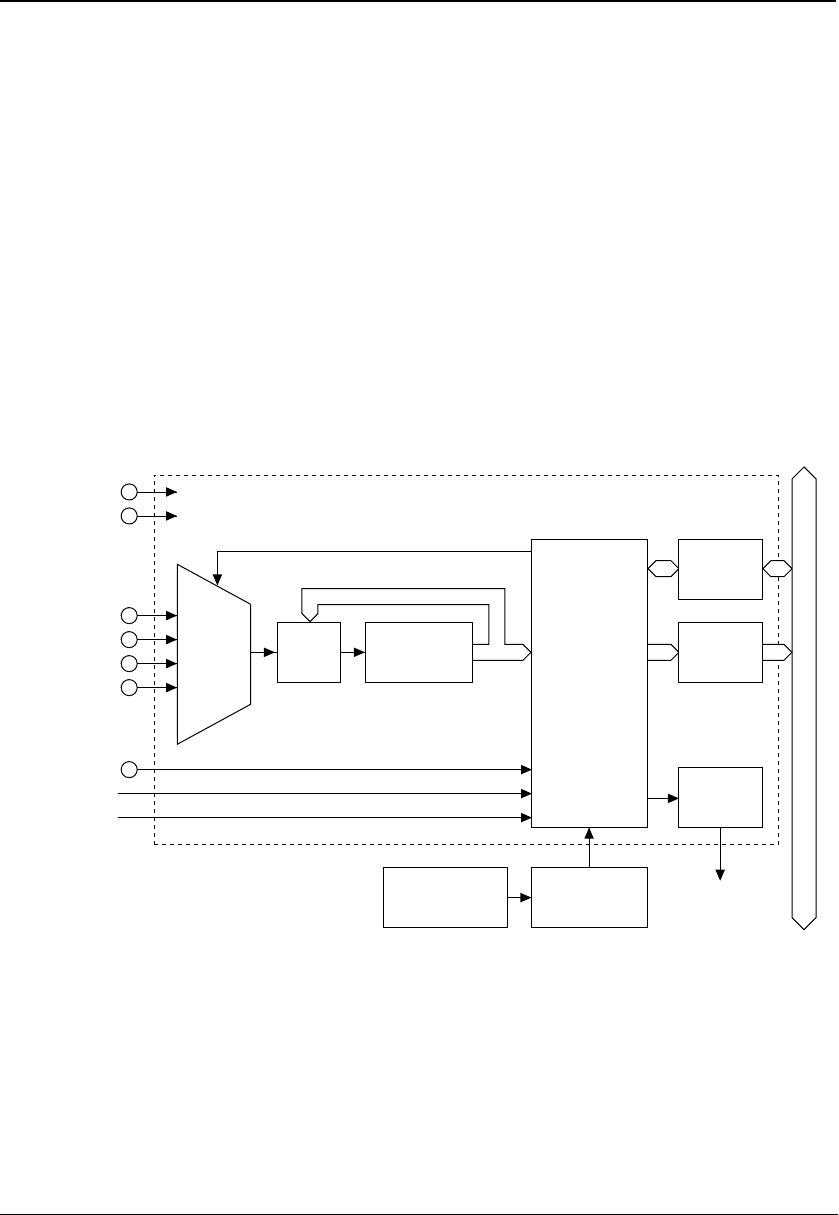
IV ANALOG BLOCK: A/D CONVERTER
S1C33210 FUNCTION PART EPSON B-IV-2-1
IV-2 A/D CONVERTER
Features and Structure of A/D Converter
The Analog Block contains an A/D converter with the following features:
• Conversion method: Successive comparison
• Resolution: 10 bits
• Input channels: Maximum of 4
• Conversion time: Maximum of 10 µs (when a 2-MHz input clock is selected)
• Conversion range: Between V
SS and AVDD
• Two conversion modes can be selected:
Normal mode: Conversion is completed in one operation.
Continuous mode: Conversion is continuous and terminated through software control.
Continuous conversion of multiple channels can be performed in each mode.
• Four types of A/D-conversion start triggers can be selected:
Triggered by the external pin (#ADTRG)
Triggered by the compare match B of the 16-bit programmable timer 0
Triggered by the underflow of the 8-bit programmable timer 0
Triggered by the software
• A/D conversion results can be read out from a 10-bit data register.
• An interrupt is generated upon completion of A/D conversion.
Figure 2.1 shows the structure of the A/D converter.
Internal data bus
AVDD
VSS
Analog
input
decoder
Control circuit
AD0
AD1
AD2
AD3
#ADTRG
8-bit timer 0
16-bit timer 0
Clock
generator
Prescaler
Interrupt request
Analog
block
Successive
approximation
block
Data
register
Interrupt
control
circuit
Control
registers
Figure 2.1 Structure of A/D Converter


















